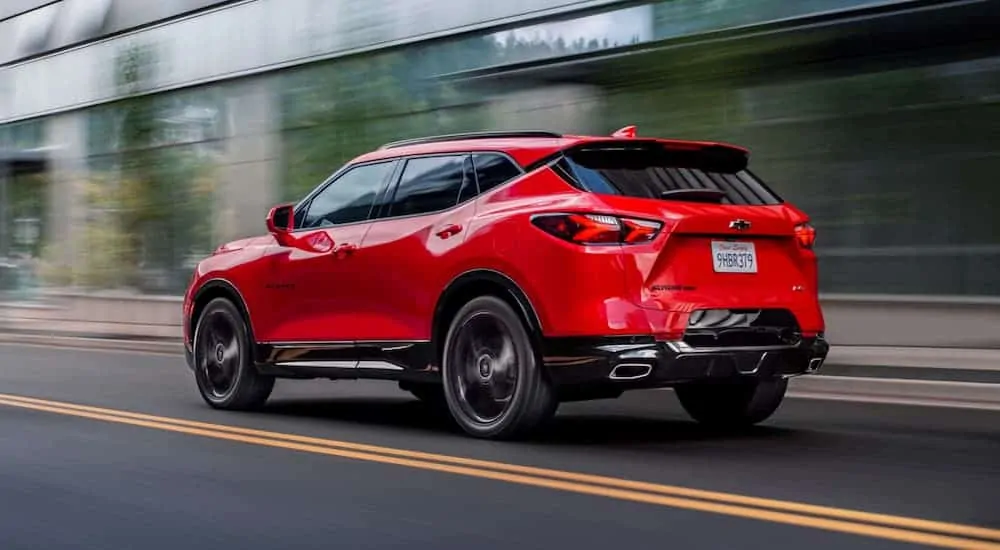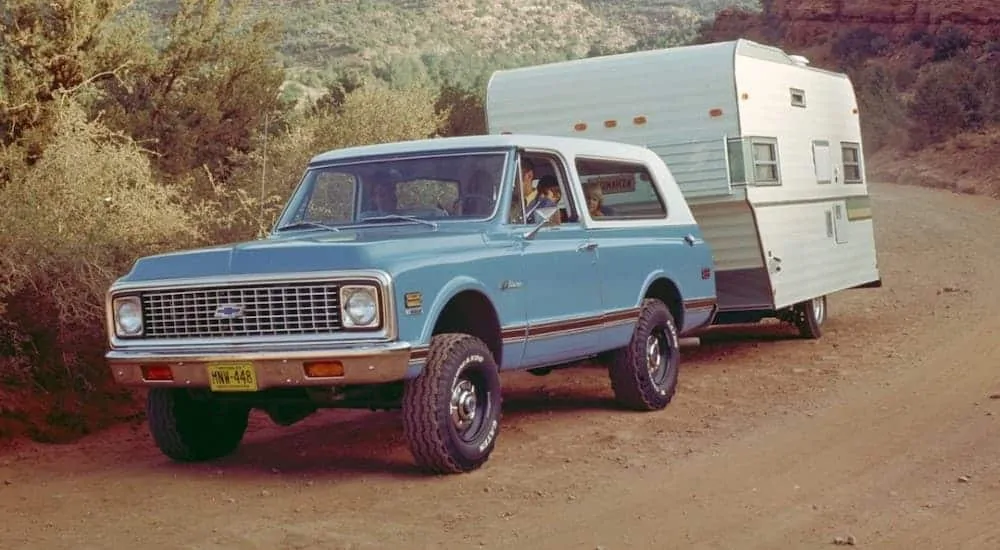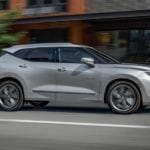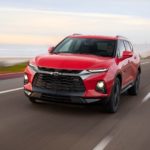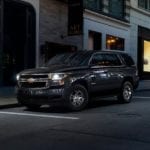The Blazer name has been around the Chevrolet lineup for decades now. And while the all-new Chevy Blazer just returned as a sporty crossover SUV, its automotive blood dates far beyond that. In order to understand the current rendition of the SUV, it is important to know where it came from. And to do this, it’s necessary to start at the beginning of the Blazer and follow its evolution into the current 2020 Chevy Blazer. With a brief history lesson, you’ll be able to better appreciate the latest and greatest design from Chevy and everything it offers to you.
The Birth Of The Chevy Blazer
Back in 1959, Chevy released its very first C/K full-size pickup. In fact, it kept this model line alive all the way through until 2002 (the Chevy Silverado has taken over as the company’s full-size pickup). A decade later, Chevy released a full-size SUV variation of the C/K pickup, known as the Chevrolet K5 Blazer. The company continued to make the K5 Blazer (also known as the full-size Blazer) up until 1994. In the mid-1980s, with the success of the K5 Blazer baser on the full-size pickup, Chevy decided to make a Blazer version of its S-10 pickup, which was the company’s smaller truck variant. This vehicle took on the official name as the Chevrolet Blazer. When General Motors stopped production of the full-size K5 version in 1994 (swapping it out for the Chevy Tahoe), the smaller Blazer remained in production through 2005.
Before the discontinuation of the Blazer, Chevy had a trim for the Blazer known as the TrailBlazer. This trim model was so popular it eventually became its own larger SUV known as the Chevy TrailBlazer. The TrailBlazer maintained the “Blazer” name further into the future until the 2008 model year, at which point the company pulled the plug on all Blazer and Blazer-variant vehicles (the TrailBlazer was replaced by the Chevy Traverse after 2009).
The Return Of The Blazer
The Chevy Blazer remained on the shelf until the 2018 model year, which Chevy revealed the all-new crossover SUV in Atlanta. With the continued growth in crossover popularity, the company wanted an SUV that was larger than the Equinox, but smaller than the Traverse (the model that replaced the TrailBlazer). So, naturally, the Blazer fits perfectly into the lineup.
This version of the Blazer, unlike its previous generations, has more in common with Chevy cars than Chevy pickups. While built along the same assembly line as the Equinox, the crossover uses the same transmission as the Chevy Cruze and Malibu. This is in part due to Chevy wanting the crossover to have nimble handling, similar to a sedan rather than a larger SUV.
Engine Performance
There are three different engine options on the 2020 Chevy Blazer. However, you don’t have a ton of selection options. If you want one particular engine, you’ll need to select a particular trim that comes with the engine you like.
The base trim, the L, comes with a 2.5L I4 engine that produces 193 horsepower and 188 lb-ft of torque. The L trim does not come with any other engine options. However, if you move up to the 2LT trim, the engine will be upgraded to the 2.0L Turbo I4 engine. This engine bumps the performance up to 230 horsepower and 258 lb-ft of torque, which is a nice jump from the other engine. The 3.6L V6 engine is an optional upgrade on the 2LT as well.
The third engine comes standard on the top-tier trims, which are the RS and the Premier. This engine is the 3.6L V6, which produces 308 horsepower and 270 lb-ft of torque.
Fuel Economy and Towing
When considering a crossover, you likely want something that has good fuel economy while also having the ability to toss on a smaller trailer or pop-up camper from time to time.
The Blazer does come with a rather solid 19.4-gallon fuel tank, so you won’t be stopping for gas every couple of hours. In terms of fuel economy, the 2.0L turbo is still being tested, so exact numbers for that have not yet been released. However, with the base 2.5L I4 engine, the crossover gives you 21 MPG in the city and 27 MPG on the highway. Should you go with the larger V6, the fuel economy shifts to 19 MPG in the city and 26 on the highway.
As for the towing potential, do note you will need to have the trailer hitch installed. You can have the hitch installed at the dealership or have it installed post-purchase, so if you don’t see a model on the lot with the hitch you want already installed, don’t fret. With either the 2.5L or the 2.0L Turbo engines, you’ll have a top towing weight of 1,500 pounds. However, if you go for the V6, the towing jumps to 4,500 pounds. If you have any kind of plans to ever spring for a trailer or pop-up camper, it’s highly recommended to go for the V6 engine option.
Entertainment
Interested in what kind of entertainment features you can find on the 2020 Chevy Blazer? With the base trim, the SUV comes with a 4.2-inch diagonal color Driver Information Center behind the steering wheel, which you can adjust to better fit your liking. It offers 4G LTE WiFi, a 6-speaker audio system, active noise cancellation, plus Bluetooth, Chevrolet Connect Access capability, and an 8-inch Chevrolet Infotainment 3 System with a touchscreen. There is also an HD rear vision camera.
As for the Premier trim, it has a 120-volt power outlet, so you can plug traditional electrical devices into the vehicle. It also upgrades the 4.2-inch Driver Information Center for an 8-inch Driver Information Center. The Premier package also comes with Bluetooth and a Bose premium 8-speaker audio system for an improved audio listening experience. The Chevrolet Infotainment 3 Premium system is an HD 8-inch color touchscreen and comes with built-in navigation as well. Like the other trim options, it has an HD rear vision camera, yet it also offers HD surround vision. This is a feature that offers an HD bird’s-eye view looking down on your vehicle. This can help improve your ability to park and navigate around obstacles, especially when you are the only person in the vehicle in a tough to maneuver area. The feature is not an available option on the other trims, so you will need to spring for the Premier trim for the feature.
The All-New Chevy Blazer
The Chevy Blazer has come a long way since it was a full-size SUV built on the C/K truck line. While it has moved away from the truck body and it absolutely is more crossover than anything else, there are still a number of design elements in the 2020 Chevy Blazer that directly draws back to the original 1969 model. But what do you think? Are you a fan of the trajectory of the new Chevy Blazer, or are you more a fan of the old design and the truck-like manufacturing style? Let us know in the comments. We’d love to hear your thoughts on the current state of this classic model line.
